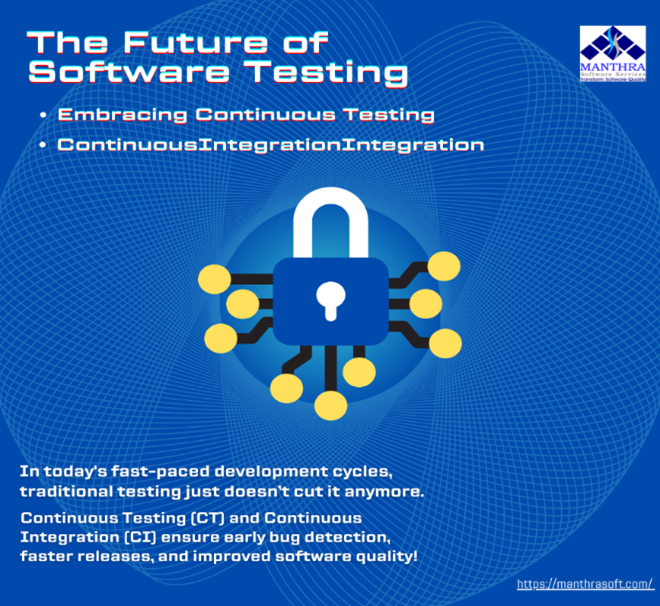Software Testing: Embracing Continuous Testing and Integration
- By: admin
- March 27, 2025
- No Comments

In today’s fast-paced software development world, ensuring quality while maintaining speed is a constant challenge. Traditional testing methods are often too slow to keep up with agile development cycles.
This is where Continuous Testing and Continuous Integration (CI) come into play. These methodologies are transforming the software testing landscape, enabling early bug detection, improving collaboration, and ensuring faster, more reliable releases.
What is Continuous Testing?
Continuous Testing is an automated testing approach that ensures software quality at every stage of the development pipeline. Unlike traditional testing, which occurs at the end of the development cycle, Continuous Testing integrates testing throughout the software development lifecycle (SDLC). This shift-left strategy helps teams detect and resolve defects early, reducing costs and time-to-market.


What is Continuous Integration?
Continuous Integration (CI) is a practice where developers frequently merge their code changes into a shared repository, followed by automated builds and tests. The goal of CI is to identify integration issues early, enabling faster debugging and smoother collaboration among development teams. Popular CI tools like Jenkins, Travis CI, etc streamline this process, ensuring seamless automation.
Benefits of Continuous Testing and CI
-
Early Bug Detection
Since tests are run at every stage, defects are caught early, preventing costly fixes later. -
Early BImproved Collaboration
CI promotes teamwork by ensuring that developers integrate and test code frequently.ug Detection
Since tests are run at every stage, defects are caught early, preventing costly fixes later. -
Faster Releases
Automated testing reduces manual efforts, accelerating the software delivery pipeline. -
Better Test Coverage
Continuous Testing runs a variety of test cases, ensuring robust software quality. -
Increased Efficiency
Teams can focus on development while automation handles repetitive testing tasks.
Challenges and How to Overcome Them While Continuous Testing and CI offer numerous advantages, implementing them can be challenging. Some common obstacles include:
-
Tool Selection
Choosing the right tools for CI/CD pipelines is critical. Popular options include Jenkins, GitLab CI/CD, and Bamboo. -
Test Maintenance
Automated tests need regular updates to remain effective. Following best practices for test automation can mitigate this issue. -
Cultural Shift
Transitioning from traditional testing to Continuous Testing requires a cultural change within teams. Training and awareness programs can help smooth this transition.
Click“Contact us now” to schedule a free consultation and see how we can transform your SAP automation journey! Free Trial – Manthra Software Services
Continuous Testing and Continuous Integration are no longer optional—they are essential for modern software development. By integrating testing throughout the SDLC, teams can deliver high-quality software at speed. As technology continues to evolve, embracing CI and Continuous Testing will be crucial for staying competitive in the ever-changing software industry.

